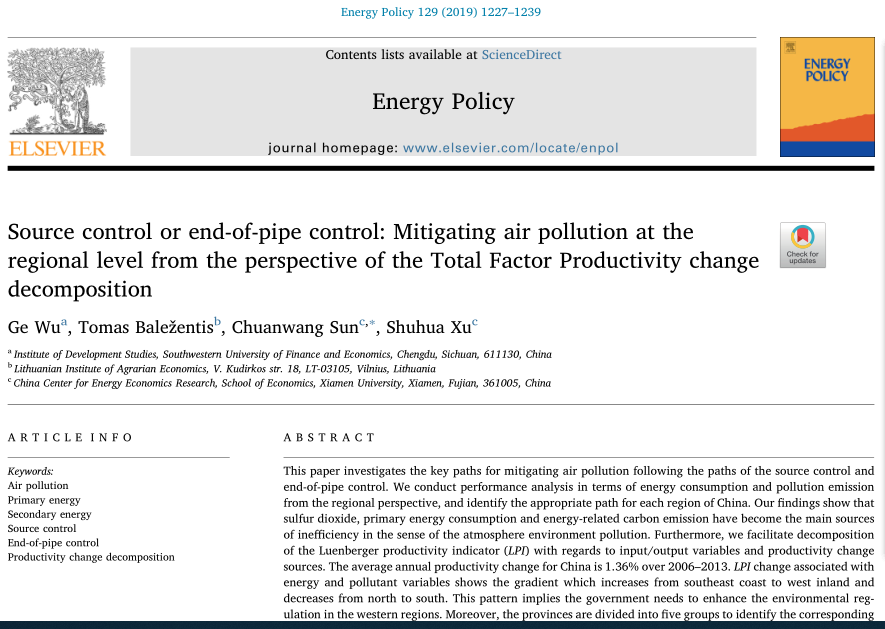
Abstract:
This paper investigates the key paths for mitigating air pollution following the paths of the source control and end-of-pipe control. We conduct performance analysis in terms of energy consumption and pollution emission from the regional perspective, and identify the appropriate path for each region of China. Our findings show that sulfur dioxide, primary energy consumption and energy-related carbon emission have become the main sources of inefficiency in the sense of the atmosphere environment pollution. Furthermore, we facilitate decomposition of the Luenberger productivity indicator (LPI) with regards to input/output variables and productivity change sources. The average annual productivity change for China is 1.36% over 2006–2013. LPI change associated with energy and pollutant variables shows the gradient which increases from southeast coast to west inland and decreases from north to south. This pattern implies the government needs to enhance the environmental regulation in the western regions. Moreover, the provinces are divided into five groups to identify the corresponding paths (source or end-of-pipe control). According to our identification, we suggest that local government should perform diversified policies suitably to strengthen source or end-of-pipe governance. This allows setting the targets for the government and further improving the effectiveness of policy measures within each region.
From:
Wu, G., Baležentis, T., Sun, C.W., Xu S.H. (2019). Source control or end-of-pipe control: Mitigating air pollution at the regional level from the perspective of the Total Factor Productivity change decomposition. Energy Policy, 129, 1227-1239.
 扫一扫关注我们
扫一扫关注我们